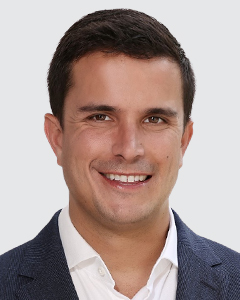A key part of breast cancer treatment is deciding what to do after surgery. Not everyone chooses to have breast reconstruction. But for those who do, there are several options available – with results that continue to improve thanks to advances in reconstructive surgery.
Breast reconstruction aims to restore breast shape, contour and volume after cancer surgery. Reconstruction can help with changes caused by a lumpectomy, where tissue (the amount varies from patient to patient) is removed from the breast.
A lumpectomy is usually followed by radiation therapy, which can alter the shape and texture of the breast. Reconstructive surgery can reduce or eliminate the resulting irregularities.
If you’ve had a mastectomy to remove one or both breasts, you have choices for reconstruction.
What Are Your Options?
Following a mastectomy, a plastic surgeon can use reconstruction techniques to restore breasts to a normal shape and appearance. In cases where only one breast has been removed, the surgeon can restore symmetry to the breasts.
There are two types of reconstruction:
Implant reconstruction: The technique uses silicone- or saline-filled implants to replace the lost breast tissue. After a skin- or nipple-sparing mastectomy by the breast surgeon, your plastic surgeon will perform the reconstruction.
Sometimes the procedure can be completed at the same time as the mastectomy. But often, a tissue expander is used to slowly expand the skin to make room for the implant months later. Implant-based reconstruction is a faster procedure, completed in a couple hours. Patients often go home the same day as the procedure.
Autologous tissue reconstruction: This is the gold standard for breast reconstruction, using tissue from your own body to rebuild your breasts. Most commonly, the tissue is taken from the belly or the buttocks. Since it uses your own tissue, the procedure delivers the most natural feel, and it comes without the lifelong implications of having implants.
There is no risk of implant rupture/leakage or need for regular monitoring by ultrasound or MRI. Additionally, implants are not lifetime devices, which means they will likely need to be replaced at some point. And if an infection occurs, it can be treated with antibiotics, since it’s living tissue. The downside is a longer recovery time (six to eight weeks) and a higher upfront investment, in terms of hospital stay, pain and surgical wounds.
Advances in Reconstruction
Historically, breast reconstruction was limited to restoring the shape of the breast. But new techniques are able to restore limited sensation to the breast skin and, in some cases, the nipple and areola.
In the past, even the skin-sparing techniques caused enough damage to the underlying nerves that most, if not all, sensation was lost. But using neurotization, reconstructive surgeons can re-establish sensations by reconnecting nerves to others found in the chest wall.
For some patients, a nipple-sparing mastectomy is also possible. The procedure can preserve the native nipple and areola. And with constant advances in this area, there are some techniques with the potential to restore some sensation to the nipple by connecting nerves to donor nerves in the chest wall.
Deciding When To Have Reconstruction
You also have options when it comes to the timing of your procedure. Some women prefer to deal with the mastectomy first, and then work later with a plastic surgeon on the reconstruction.
For patients planning to go the autologous route, reconstruction can begin immediately after the mastectomy. Your plastic surgeon will be standing by, ready to step in as soon as the mastectomy is completed. In some cases, the reconstruction can be largely completed at that time. However, it is still likely that you would need additional procedures later for fine-tuning and contouring.
More often, the initial procedure is a staging process, involving the placement of a tissue expander to begin enlarging the breast pocket. The second stage of reconstruction, using implants or our own body tissue, would be completed about three months later.
Your reconstructive surgeon can help you determine which approach is better for you.
Choose to Stay in Touch
Sign up to receive the latest health news and trends, wellness & prevention tips, and much more from Orlando Health.
Sign Up





